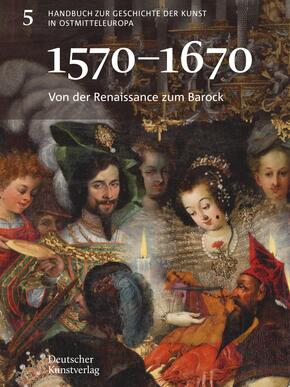Handbuch zur Geschichte der Kunst in Ostmitteleuropa: Von der Renaissance zum Barock (1570-1670)
| Verlag | Deutscher Kunstverlag |
| Auflage | 2025 |
| Seiten | 656 |
| Format | 22,4 x 5,1 x 28,3 cm |
| Gewicht | 3052 g |
| ISBN-10 | 3422069623 |
| ISBN-13 | 9783422069626 |
| Bestell-Nr | 42206962A |
Der Zeitraum von 1570 bis 1670 ist eine Epoche großer Kriege, welche das östliche Mitteleuropa prägten. Doch schwiegen die Künste in diesen Zeiten keineswegs. Ein Faktor war die Migration von Künstlern innerhalb Ostmitteleuropas sowie aus dem Westen und Süden des Kontinents in die Region. Die Maler und Bildhauer, die aus den Niederlanden nach Danzig zogen, die Künstler und Handwerker aus Rom oder Norditalien an, die für den Adel tätig wurden. Kaiser Rudolf II., der für seinen Prager Hof die besten Künstler Europas gewinnen wollte, und nicht zuletzt die geistlichen Orden, die im Zuge der Gegenreformation eine neue Formensprache nach Ostmitteleuropa brachten, trugen bei zu einem facettenreichen künstlerischen Schaffen am langen Übergang von der Spätrenaissance zum Barock.
Blick ins Buch
The time period from 1570 to 1670 was an epoch of large-scale wars. But during this time of crisis in East-Central Europe the arts were in no way silent. One important factor was the migration of artists within East-Central Europe as well as from the west and south of the continent to this region. The painters and sculptors who worked for the Bohemian, Moravian, or Polisch-Lithuanian nobility, the Holy Roman Emperor Rudolf II, who wanted to obtain the best artists in Europe for his court in Prague, and, not least, the religious orders, which brought a new formal language to East-Central Europe in the course of the Counter-Reformation, contributed to multifaceted work during the long transition from the late Renaissance to the Baroque.
Look inside


















